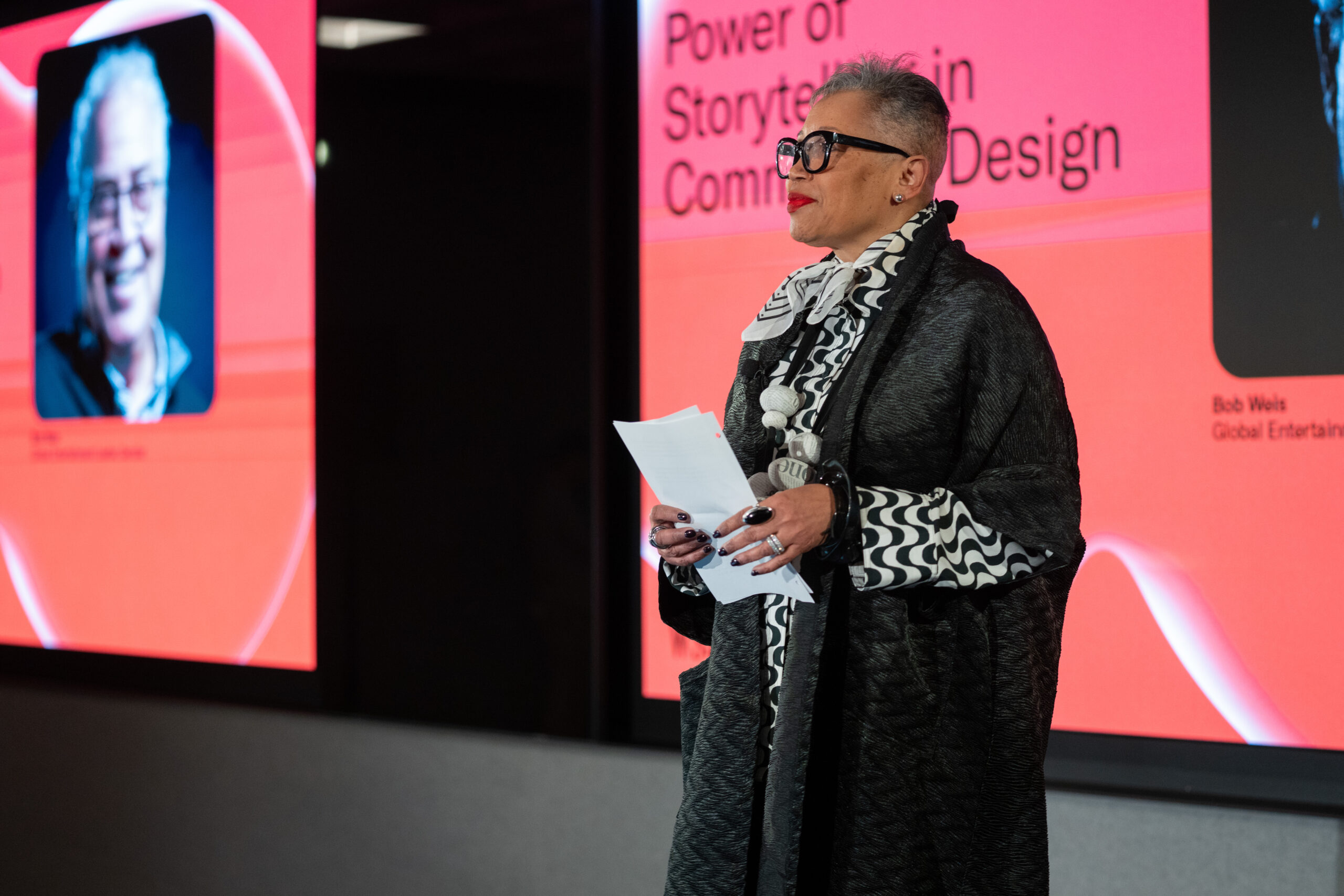
November 30, 2018
Chain Letters: Dana Chisnell

This interview is part of an ongoing Design Observer series, Chain Letters, in which we ask leading design minds a few burning questions—and so do their peers, for a year-long conversation about the state of the industry.
This November, we‘re looking at design and democracy through a different lens: service design, and how it functions within government systems to serve us better.
Dana Chisnell, Co-Executive Director of the Center for Civic Design, is a pioneer in civic design. She and her team at CCD have mapped the voter journey with the goal of ensuring voter intent by design. She was a “generalist problem solver” in the founding cohort of the United States Digital Service in the Obama White House. She teaches election design at University of Minnesota and design in government at Harvard Kennedy School of Government.
What are a few key factors you consider when asked to take on a project by a government entity and in determining whether or not your work will have lasting success?
I, along with my company, the Center for Civic Design, look at a few key questions:
- What’s the problem to be solved?
- How much buy-in is there for solving the problem?
- What kinds of pain is the organization feeling?
- How closely tied are those pains to what people internally are rewarded for?
- Is the government entity focused on outcomes or outputs?
For me, personally, it’s all about understanding the problem space and what the experience is of the people who are feeling the problem the most. You might think that these aren’t design questions, but one of my biggest lessons learned in my time at the U.S. Digital Service was that in working on very large scale problems, you’re in the business of culture change. So you can’t just improve a website or redesign a form if you want to improve government services. You have to understand what the goals and motivations of the organization and the people in it.
Our work at the Center for Civic Design focuses a lot on design in election administration. The public focuses on ballot design, which makes sense when you first start to think about ensuring that voters can vote the way they intend. But when you start looking at why ballots are designed the way they are, then you start to see all of the constraints within government service: legal, technological, financial, and skill. In some cases, these come back to individual goals and motivations. For example, some ballot design problems get patched by legislation written by people elected to office who want to be seen to have solved a problem.
You might think these aren’t design questions, but you’re in the business of culture change.
How do you identify opportunities for improvement in a designed system that appears broken?
There are a lot of different flavors of “designed.” For one, there’s unintentional design—someone or some group without much design literacy or fluency patched a problem or created a whole new system not conscious of the fact that they lacked the competence to design or improve it.
But, of course, design is ultimately the rendering of intent. We have the system that we are optimized for. Our federal republican democracy was designed very intentionally. The government we have is both an outcome and a structure that is optimized to support the vision of the founders. This system of government is constantly, iteratively being challenged, tweaked, and “improved.” Everyone in government is designing it, all the time.
Everyone I have met in government wants it to work well for the public. They don’t always have the tools, resources, or skills they need to deliver the best outcomes. And change happens in small increments, over time. If you can harness the problem-solving aspect of design and help people build literacy, then fluency, and ultimately, mastery of design practices, you can help them solve smaller upstream and downstream problems that lead to eventual progress. That’s what my team at the Center for Civic Design tries to do. (This is also why I love teaching design research to policy analysts and economists.)
Everyone in government is designing it, all the time.
Does poor information design disproportionately affect some user groups over others, and what are the implications of that relationship?
At the U.S. Digital Service and at the Center for Civic Design, the teams I’ve worked on focus on plain language and plain interaction because about 48% of American adults read at or below the 6th grade level. We’re such a wordy, visually-oriented society, and yet, we all know people who have reading problems. They may have developed workarounds—they may not even be diagnosed—so you might not recognize them, but they are there.
People with low English proficiency also are affected disproportionately by poor information design. This means that they have fewer chances to be involved in their communities and in civic life.
Presentation of information affects people with disabilities such as low vision and blindness, and cognitive disabilities. Leading up to the 2018 midterm elections in the U.S., the team at the Center for Civic Design reviewed websites for each state’s election board, commission, or department, and we asked people to try to find answers to their own questions about the election on the state websites. Observing people who were blind, had low vision, or had cognitive disabilities was excruciating. These sites—and dozens like them across the web—are not accessible. The problem isn’t exclusive to government websites, but government websites are crucial for people with disabilities to have access to government services and civic life.
Government services at their best exercise the service part of their charters.
What do government services look like at their best?
Government services at their best use computers to do the things that computers are good at, and leave the humans to do the things that they are good at. They sew up the seams between agencies and departments to support the needs of their constituents.
Government services at their best exercise the service part of their charters. They don’t treat a constituent as if they’re meeting that person for the first time every time the person interacts with the government.
A great example is the U.S. Social Security Administration. When you retire, or you need disability benefits, the experience is uniformly, authentically good. The humans you talk to at SSA are knowledgeable, polite, kind, and helpful. And this is true when you are in-person at an SSA office or if you’re on the phone with them. The website is, too—it’s as if the agency actively asked themselves if this website were a person working for us, what would they be like? And built it to convey that tone, voice, and interaction. SSA works hard to ensure that people are being served well across the service, no matter the channel. That’s what government service looks like at its best.
From Toni L. Griffin: Many communities of color, both Americans and foreign-born, obtain information and build trust through personal relationships rather than digital ones. At a time when accusations of voter suppression are prevalent, how does your work take into account the way different communities learn, communicate, and build trust? How have you seen your work break down barriers of distrust and instill greater inclusion and participation?
It isn’t just people of color—pretty much everyone gets their information through trusted relationships. In our work at the Center for Civic Design, we work closely with partners in government agencies to help them convey simple, clear, authoritative information in inviting ways. For example, California counties are required by law to send a voter guide to every registered voter. (These days, people are given the option of getting an electronic version.)
Through our research, we’ve learned the questions people really ask about elections, and the obstacles they face. We know that if voter guides are designed appropriately: official but not too dry, inviting but not flashy, and in plain language that helps people answer their questions, these artifacts get shared in the household (and possibly beyond).
We also work a lot on language access. That is, some jurisdictions are required by federal law to provide ballots and other materials in languages other than English. Providing this support well isn’t easy or straightforward. Jurisdictions are learning more about how to do it well all the time.
There are two keys to successful language support: first, the original English text has to be plain and clear. Second, testing the text with monolingual non-English speakers and bilingual people who read at or below the 6th grade level. When jurisdictions take these steps, they deliver better information to their constituents, they learn about how to do a better job in the next iteration, and because the facts are understandable readers find it relatable and easy to verify.
Next week Dana asks Sonja Rasula, founder of Unique Markets: I love how you have tied Unique Markets to the idea that spending locally makes the local community better, by supporting local shops and contributing to the tax base. What are the particular qualities of the merchants you recruit to be part of your local popup events? Are there clear differences in design offered by merchants from, say, LA to Boston?
Observed
View all
Observed
By Lilly Smith
Related Posts

Design Juice
L’Oreal Thompson Payton|Books
Less is liberation: Christine Platt talks Afrominimalism and designing a spacious life

Design Juice
L’Oreal Thompson Payton|Interviews
Cheryl Durst on design, diversity, and defining her own path

Arts + Culture
Jessica Helfand|Interviews
Josef Koudelka, Next: A Visual Biography: Ten Questions for Melissa Harris

Sustainability
The Editors|Interviews
GOOOOOOAL
Related Posts

Design Juice
L’Oreal Thompson Payton|Books
Less is liberation: Christine Platt talks Afrominimalism and designing a spacious life

Design Juice
L’Oreal Thompson Payton|Interviews
Cheryl Durst on design, diversity, and defining her own path

Arts + Culture
Jessica Helfand|Interviews
Josef Koudelka, Next: A Visual Biography: Ten Questions for Melissa Harris

Sustainability
The Editors|Interviews
